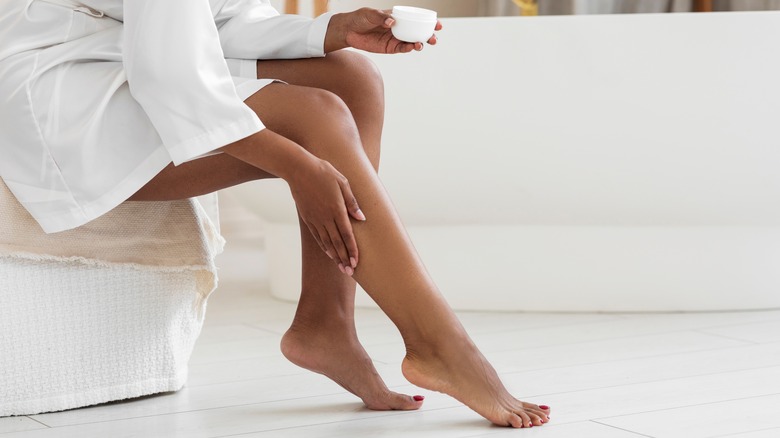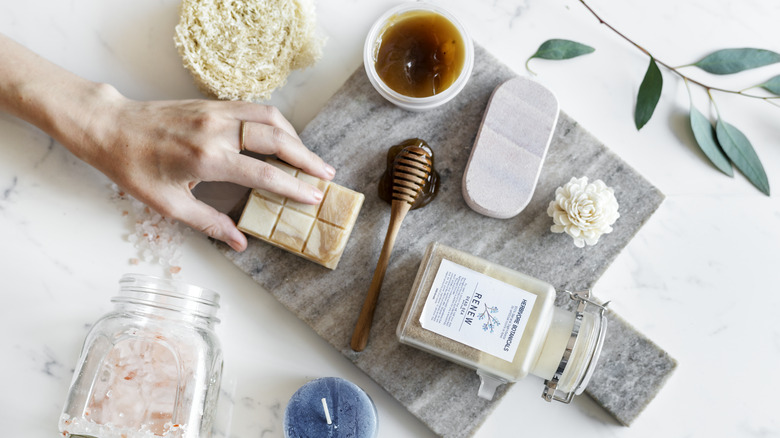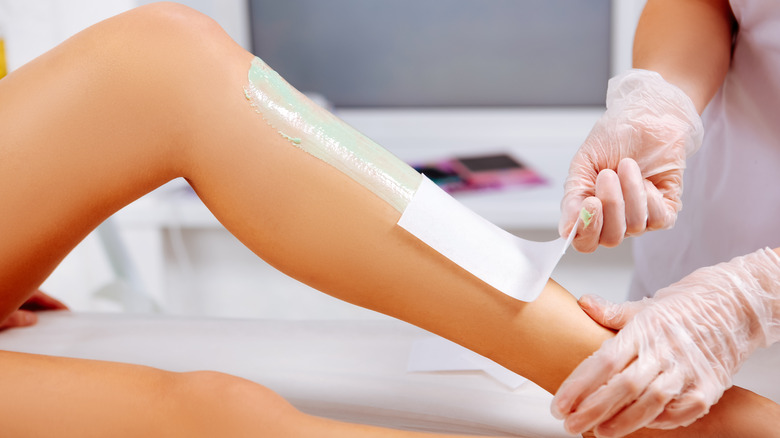Products You Should Never Apply To Your Skin After A Wax
Though it can be unpleasant, waxing is one of those processes you need to have done if you strive for less body hair and upkeep. Many people make the swap from shaving to waxing because it comes with long-lasting results. Depending on the rate at which your hair grows, you may be able to get away with going weeks in between waxings before you need another removal session. This is because — unlike shaving — waxing involves removing hair at the follicle (below the surface of your skin). However, proper skincare is necessary before and after your wax to ensure that don't end up with unwanted redness, tenderness, and even an infection.
If you're a skincare guru, you likely own everything from vitamin C serums to anti-aging moisturizers. However, many of these items fall into the category of ones you should steer clear of after a wax. This is because, despite their usefulness in your daily routine, your skin can be particularly sensitive after waxing. Chemical exfoliants, for example, can be too harsh on your now-hairless skin after a wax. Even some makeup can be problematic after a waxing, depending on its ingredients — anything that consists of a pore-clogging formula can potentially result in a breakout. Here are some other products you should never apply after undergoing this hair removal process.
Products you shouldn't use on your skin after waxing
Whether it was your first wax or one of many you've done, it's essential to know the dos and don'ts of post-waxing aftercare. While soreness and redness are fairly common up to 48 hours after the process, you can ensure that your skin makes a speedy recovery by avoiding certain products, such as exfoliants. These products are designed to remove layers of dead skin, but they can be too rough right after waxing. Furthermore, they can even result in ingrown hairs, which can be difficult to get rid of later on. Try to wait at least 24 hours before going back to your exfoliation routine.
Other products you should avoid right after a wax include harsh soaps and cleansers, especially those that contain fragrances. This can cause further irritation to your skin and extend your recovery period. Keeping your skin hydrated post-waxing, however, is never a bad idea, as long as you use a high-quality moisturizer. Look for one with ingredients like shea butter or coconut oil to provide beneficial moisture to the waxed area. You might even want to consider applying aloe vera gel, which is known for its healing and hydrating properties.
Other waxing dos and don'ts
In addition to avoiding using certain products on your skin after a wax, you should also steer clear of certain activities that may raise the risk of negative side effects. For instance, hitting the gym right after a wax can increase your chances of developing a rash and infection as a result of sweat and bacteria, so wait at least 48 hours after your wax to resume your workout.
If you had an area of your body waxed that will be immediately exposed to sunlight, do your best to protect it. Your skin will be more vulnerable to burning and inflammation after your wax, so sunscreen will be a must if you can't avoid being outdoors.
Finally, be kind to your skin after waxing by preventing exposure to extreme heat. For example, a steamy shower or a tanning bed can cause irritation. Furthermore, it can set your already-sensitive skin up for dryness. Right after your wax, try to only use lukewarm water on the affected area until it has a chance to recover.
Whether you choose to wax at home or visit an aesthetician, it's important to know how to properly care for your skin during the recovery period. If you have any questions about products you should avoid after your waxing, don't hesitate to ask your aesthetician before your appointment. If you're unsure about handling the process at home or it's your first waxing, you may want to go to a professional.


